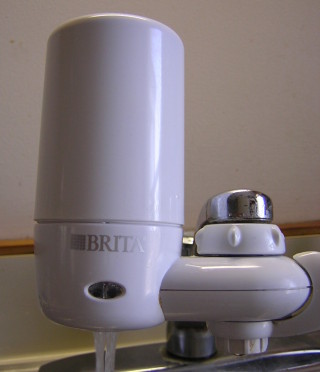Activated carbon (AC) filters are becoming popular for treatment of water used for cooking and drinking. Different types of carbon filters remove different contaminants. Some AC filtration can remove many harmless taste and odor-producing compounds in water. Some also can remove or reduce organic chemicals such as benzene, chlorobenzenes, carbon tetrachloride, and methylene chloride. In addition, specialized AC filtration can absorb heavy metals such as lead. AC filters will not remove microbial contaminants (such as bacteria and viruses), nitrate, fluoride, hard water minerals, and many other compounds.
Available Equipment Types
AC filters are most often pour-through, faucet-mounted, in-line, or line-bypass. Pour-through models (such as pitchers with a filter) are the simplest type of AC filter. Water is simply poured through the carbon and collected in a container. These units aren’t connected to the water supply. Faucet-mounted devices are attached to the faucet or set on the counter with connections to the faucet. This type can have a bypass valve that allows selective filtering. Both pour-through and faucet-mounted units are inexpensive and simple, but will treat only limited quantities of water at a time and are not as effective as other devices because contact time is limited due to the small amounts of carbon contained in the units.
An in-line device is installed beneath the kitchen sink in the cold water supply line. In this situation, only the cold water can be considered to be treated. If hot and cold water are blended, the treated cold water mixes with the untreated hot water.
In the line-bypass system, a separate faucet is installed at the sink. The unit is attached to the cold water pipe and provides drinking and cooking water, with the regular tap providing untreated water for non-consumptive use.
Filter Replacement
Carbon cartridges must be replaced regularly. Replacement intervals should be determined based on daily water flow through the filter and the contaminant being removed. Some manufacturers state a recommended water treatment capacity in gallons, beyond which the AC should be replaced. Tests done by Rodale Press Product Testing Department indicated that filter performance was reduced significantly after 75 percent of the manufacturer’s recommended lifetime. Therefore, it may be safer to replace the filter more often than recommended by the manufacturer.
AC filters which have been idle for a number of days or which are saturated with organic matter provide an excellent environment for bacterial growth. There is little risk to healthy people consuming harmless (non-pathogenic) bacteria found on most AC filters. However, there may be some concern for the very young, the very old, and those with weakened immune systems. When a filter has been idle for several hours (such as in the morning) the amount of bacteria on the filter may be reduced by running water through the filter for 30 seconds. Some filters are impregnated with silver to try to prevent bacterial growth, but studies indicate that this practice makes little difference in reducing bacteria. Any advantage seen from the silver is only apparent in the first month of use. The best practice is to replace the filter as often or more often than the manufacturer recommends.
